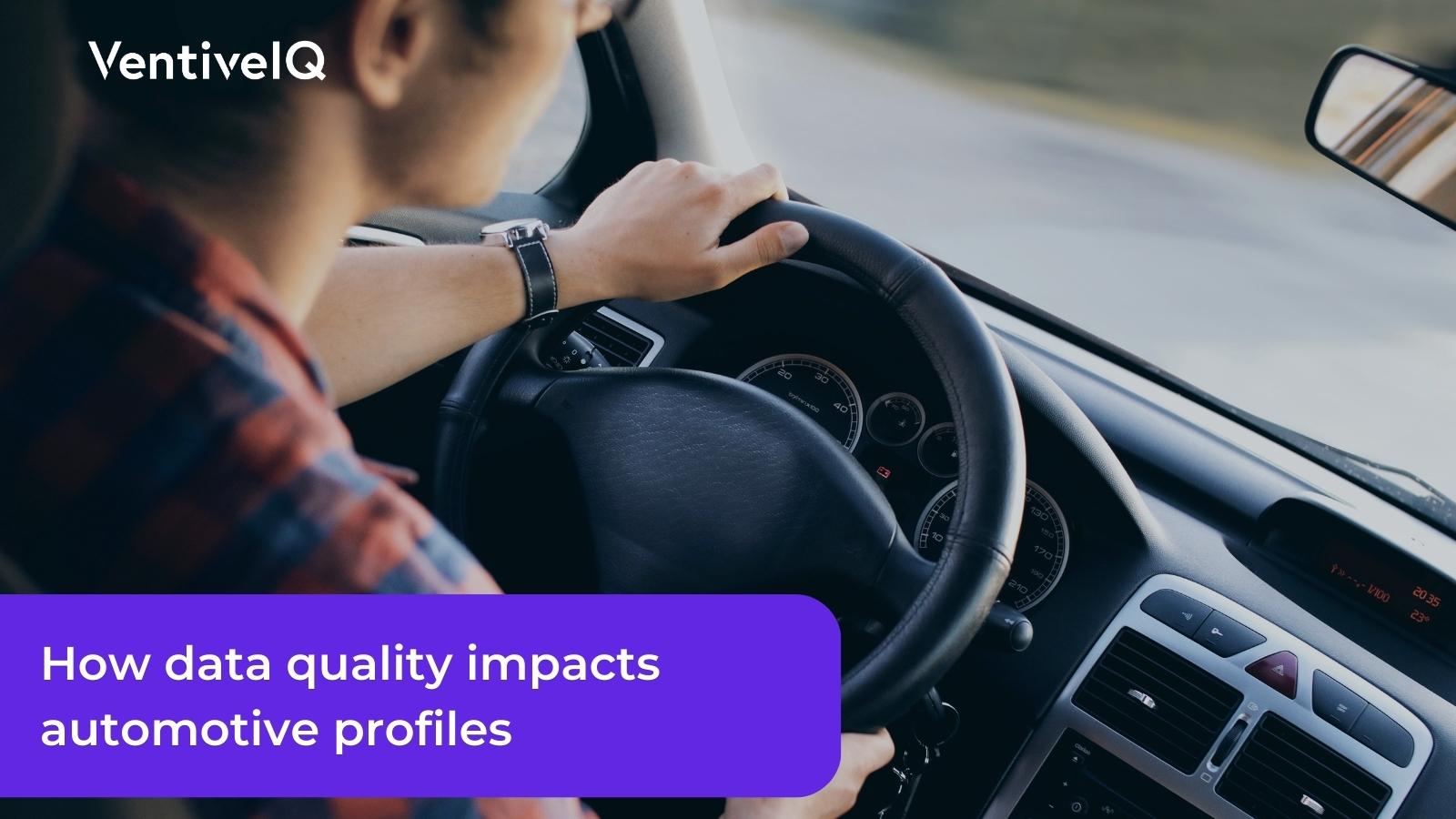Explore the power of automotive data & discover how data-driven insights are revolutionizing the industry. Dive into the world of vehicle analytics with VentiveIQ!
Introduction to Automotive data
The automotive industry is changing fast, thanks to technological progress, shifting customer tastes, and eco-friendly rules. To thrive in this competitive arena, companies must adopt decision-making based on data. Automotive data can offer precious insights into customer actions, vehicle performance, and market trends, empowering businesses to:
- Improve product development
- Optimize supply chain management
- Enhance customer service
- Develop new revenue streams
- Reduce costs

The automotive data landscape in the USA
The United States stands as one of the world’s biggest automotive markets, and the volume of data automotive being produced is skyrocketing. This data stems from a wide range of sources, including:
- Connected vehicles
- Telematics devices
- Aftermarket sensors
- Dealership management systems
- Customer surveys
- Social media
In the USA, automotive companies are harnessing this data to enhance their operations and stay ahead of the competition. For instance, car manufacturers are using data to create vehicles that are not only more fuel-efficient but also safer. Suppliers are making the most of data to fine-tune their manufacturing and delivery methods. Dealerships are utilizing data to enhance their customer service and boost their sales performance.
How to drive success with automotive data
To drive success with data automotive, businesses need to:
- Collect and integrate data from multiple sources. This can be a challenge, as data automotive is often siloed in different systems. However, there are a number of data integration solutions available to help businesses overcome this challenge.
- Cleanse and prepare the data. Automotive data can be noisy and incomplete, so it is important to cleanse and prepare the data before analyzing it. This involves identifying and correcting errors, removing duplicate data, and filling in missing values.
- Analyze the data to identify trends and patterns. This can be accomplished using a diverse range of data analysis tools and methods. Once businesses have identified trends and patterns, they can use this information to make informed decisions.
- Visualize the data to communicate insights. Data visualization tools can be used to create charts, graphs, and other visuals that make it easy to understand and communicate data insights.
Why Automotive Data Matters
The automotive world is quite accustomed to change. From the rise of electric vehicles to the journey towards autonomous driving, and the ever-shifting preferences of consumers, keeping up with the times is absolutely vital for achieving success. That’s where data automotive steps in. It brings a trove of information that can give you a real competitive edge.
- Optimizing Operations: Data automotive can help businesses streamline their operations. Whether it’s monitoring vehicle health, tracking fuel efficiency, or managing maintenance schedules, data-driven insights can lead to significant cost savings.
- Enhancing Customer Experience: It’s absolutely essential to grasp and be in sync with the way customers behave and their preferences. By analyzing data, businesses can tailor their products and services to meet customer demands, ultimately boosting customer satisfaction and loyalty.
- Increasing Safety: Safety is a top priority in the automotive industry. Real-time data from vehicles can be used to identify and mitigate potential safety risks, leading to safer driving experiences for customers.
- Improving Sustainability: As the world shifts towards sustainability, data automotive can help organizations reduce their carbon footprint. Insights into emissions, energy usage, and more can aid in creating environmentally friendly solutions.

Vehicle Analytics: The Heart of Automotive Data
Vehicle analytics is the beating heart of data automotive. This remarkable tool acts as the key to unlocking precious insights from the enormous amount of data produced by vehicles. Through vehicle analytics, businesses can achieve a more profound understanding of their day-to-day operations, customer behaviors, and the market as a whole.
- Predictive Maintenance: One of the key applications of vehicle analytics is predictive maintenance. By analyzing data from vehicles, businesses can anticipate maintenance needs and prevent costly breakdowns, ensuring optimal vehicle performance.
- Fleet Management: For businesses with a fleet of vehicles, vehicle analytics is a game-changer. It provides real-time data on vehicle location, fuel consumption, and driver behavior, allowing for more efficient fleet management and cost reduction.
- Telematics: Telematics solutions, powered by vehicle analytics, offer a range of features like GPS tracking, remote diagnostics, and driver behavior monitoring. These insights enable businesses to make data-driven decisions and improve overall efficiency.
Challenges and Opportunities
While the advantages of using data automotive are evident, there are hurdles to surmount. Data security and safeguarding privacy are of utmost importance, and it’s imperative for businesses to handle these matters with care. Furthermore, the sheer volume of data generated can seem daunting. Nonetheless, with the appropriate tools and know-how, these challenges can be transformed into promising opportunities.
- Data Security: Protecting customer and business data is non-negotiable. Implementing robust data security measures is essential to building trust with customers and complying with regulations.
- Big Data Management: Managing the massive amounts of data generated by vehicles requires sophisticated data storage and processing solutions. Cloud-based platforms and data analytics tools can help businesses harness the full potential of data automotive.
VentiveIQ’s Take on Driving Success with Automotive Data
Here at VentiveIQ, we hold a strong belief that automotive data is the ultimate catalyst for achieving success in the USA market. Our mission is to assist automotive companies in the collection, integration, analysis, and visualization of automotive data, all with the aim of unearthing valuable insights that can supercharge their products and services, streamline operations, and elevate decision-making. Let’s delve into some of the ways we empower automotive businesses to thrive through data:
- Data collection and integration: We help businesses collect and integrate automotive data from multiple sources, including connected vehicles, telematics devices, aftermarket sensors, dealership management systems, customer surveys, and social media.
- Data cleansing and preparation: We help businesses to cleanse and prepare automotive data for analysis. This involves identifying and correcting errors, removing duplicate data, and filling in missing values.
- Data analysis: We help businesses to analyze automotive data to identify trends and patterns. We use a variety of data analysis tools and techniques, including machine learning and artificial intelligence.
- Data visualization: We help businesses to visualize automotive data to communicate insights to stakeholders. We use a variety of data visualization tools to create charts, graphs, and other visuals that are easy to understand.

We have helped a number of automotive businesses in the USA to drive success with data. Here are a few examples:
- We helped a major automaker to develop a new predictive maintenance program. By analyzing data from connected vehicles, we were able to identify patterns that could predict when vehicles were likely to need maintenance. This information was used to develop a predictive maintenance program that helped the automaker to reduce costs and improve customer satisfaction.
- We helped a supplier to optimize its production process. By analyzing data from its manufacturing plants, we were able to identify areas where the production process could be improved. This information was used to implement a number of changes that helped the supplier to reduce costs and improve efficiency.
- We helped a dealership group to improve its customer service. By analyzing data from its customer relationship management (CRM) system, we were able to identify customers who were likely to need service or repairs. This information was used to target these customers with relevant marketing campaigns. The dealership group also used the data to train its sales representatives on customer needs and preferences.
- We believe that automotive data has the potential to transform the automotive industry in the USA market. By helping businesses to collect, integrate, analyze, and visualize automotive data, we can help them to improve their products and services, streamline operations, and make better decisions.

Conclusion
As we’ve uncovered in this blog post, automotive data isn’t merely a trendy term; it’s the dynamic engine powering triumph in the automotive realm. By harnessing data-driven insights, businesses can refine their operations, enrich the customer experience, boost safety measures, and promote sustainability. Vehicle analytics stands at the core of this transformation, offering the means to extract precious insights from the data generated by vehicles. With the appropriate data analysis tools and a steadfast commitment to data security, businesses can conquer obstacles and seize opportunities.


